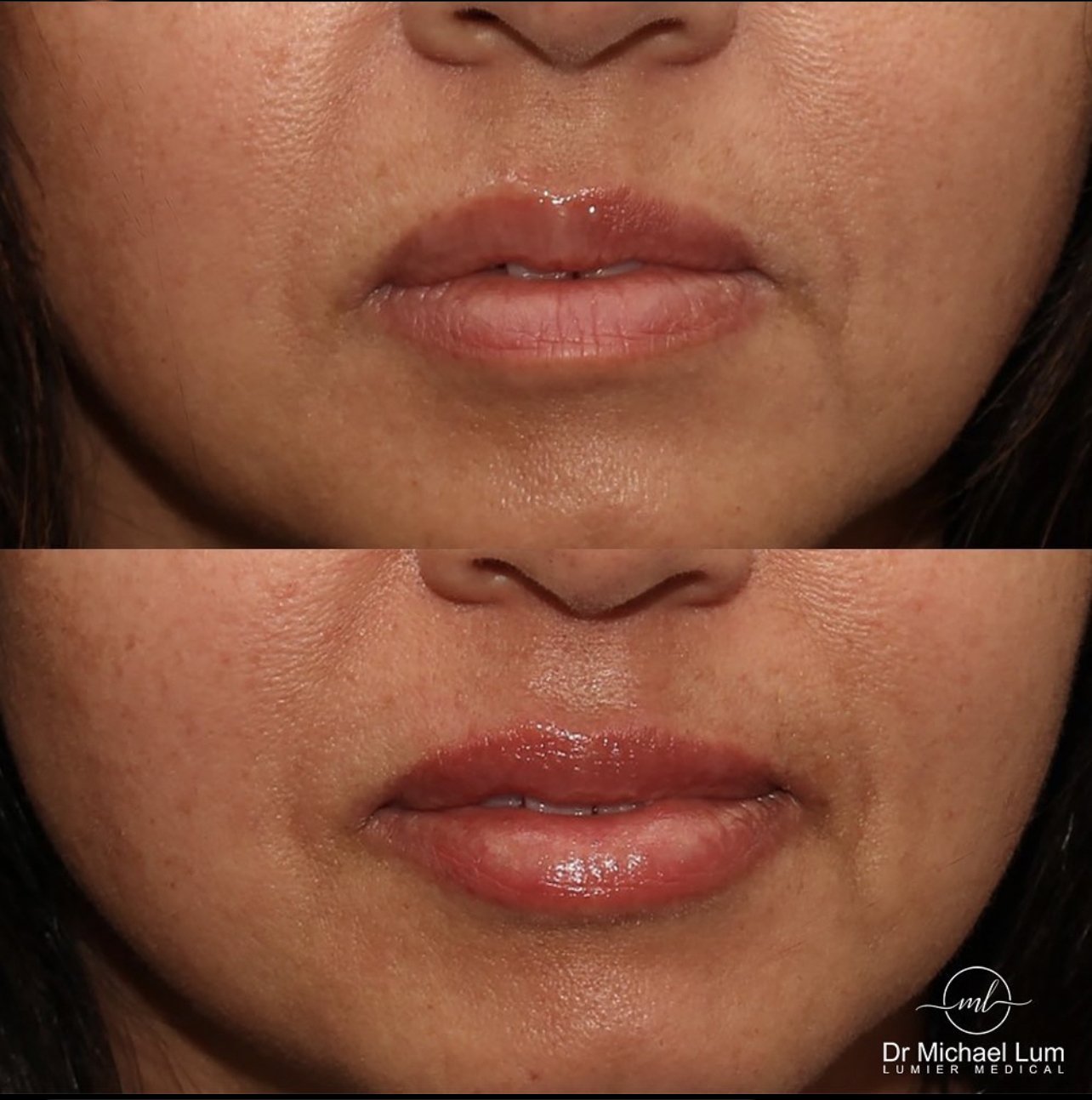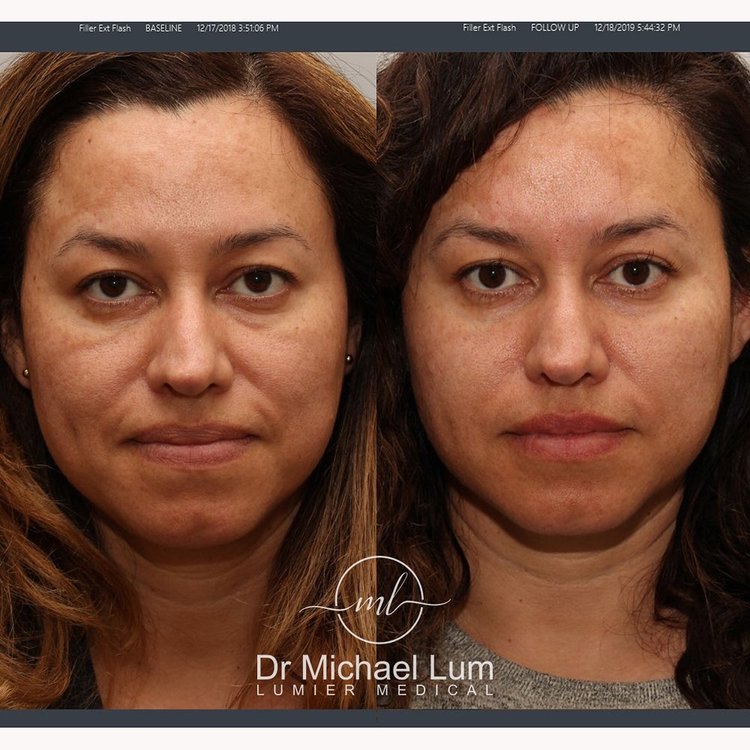Restore or enhance the younger you!
Many people are worried that fillers will make them look puffy or unnatural looking. Visit our gallery section to see how fillers can enhance ones youthful appearance without looking overdone. We can now restore volume to hollow temples, cheeks, lips, jawline, and the chin area. We can also treat the lines of the neck and restore volume to aged hands.
What are fillers?
Hyaluronic acid fillers are reversible transparent gels that add volume when injected into soft tissue. They are often referred to as “dermal fillers,” because years ago they were mostly injected into the dermis, the thick part of the skin.
Filler injections are sought after by adults of all ages. The most popular fillers are made of a sugar substance called Hyaluronic Acid, abbreviated simply as “HA.” They are injected into or under the skin to help fill in wrinkles, provide volume to soft tissues, and balance out facial features.
HA filler injections are the second most popular nonsurgical cosmetic procedures performed in the United States. BOTOX Cosmetic and BOTOX-like toxins are the most commonly sought after nonsurgical cosmetic procedures. Fillers and Botox are often used in combination to achieve the best results.
We now have over 20 different types of hyaluronic acid fillers that are FDA-approved. These include 8 types of Restylane, 7 types of Juvederm, Belotero Balance+, Revanesse Versa+, Revanesse Lips+, RHA Redensity, RHA 2, RHA 3, and RHA 4. See the Fillers Comparison Table toward the bottom of this page.
The variety of fillers we now have allows the injector to choose “the right tool for the job.”
What happens if I stop using fillers?
It is a myth that fillers will make you look worse once you stop using them. Think about how shoe trees help your shoes keep their shape and avoid creasing of the leather.
Let’s face it. We are deflating with age. Fillers help delay signs of aging.
What happened to collagen fillers?
Zyderm and Zyplast were bovine collagen fillers that were popular, starting in the 1980s. Unlike bovine collagen filler that was made of a protein derived from a cow, hyaluronic acid is a non-animal product.
Hyaluronic acid (HA) is a naturally occurring sugar substance that your body produces. Most of your body’s hyaluronic acid is in your skin. It can also be found in your joints, your eyes, and in other parts of your body.
HA fillers last much longer than collagen, require no skin testing prior to treatment, and are reversible. In 2003, Restylane, the first FDA-approved HA filler in the United States became the new benchmark by which others followed.
HA fillers are modified and stabilized during the manufacturing process to give them longevity and special physical characteristics for cosmetic use.
A filler comparison table is included below.

For more details, click on the following table…
** Restylane products (Galderma), Juvederm Products (Abbvie(Allergan)), Belotero Balance (Merz Aesthetics), Revanesse Products (Prollenium Medical Technologies), RHA (Revance Aesthetics).
RHA PRESERVED NETWORK Technology that uses a lower degree of modification/crosslinking. Designed to preserve long HA chains from fragmentation in the manufacturing process.
LEGEND
- Hyaluronic Acid (HA) A water soluble sugar polymer that belongs to a class of compounds known as glycosaminoglycans. It is made up of long chains of repeating disaccharide units of N-acetylglucosamine and glucuronic acid.18
- HA Chain Length ∝ Molecular Weight HA chain length is associated with (proportional to) the molecular weight of the HA chain.18 Short HA Chains = Low Molecular Weight (LMW), Long HA Chains = High Molecular Weight (HMW).
- Monophasic Cross-links formed between hyaluronic acid chains make a uniform gel-like structure.
- Biphasic Biphasic material consists of 2 or more substances in a blend. In the case of hyaluronic acid, it can exist in two different physical states: cross-linked HA and non-cross-linked HA. Biphasic material is not homogenous (not uniform in character or content).
- (%) Degree of Modification (MoD) Degree of Modification (MoD) is the ratio of chemical crosslinkers that form cross-links to the total number of HA disaccharide units.
- Dynamic Strength Score (Pa2) The Dynamic Strength Score characterizes the ability of a gel to maintain its physical integrity and gel characteristics over a wide range of stress or deformation values15
- Stretch Score (%/s) Stretch is the ability of the gel to deform (e.g., extend) and adapt to dynamic facial movement. The Stretch Score describes the ability of an HA gel to deform without disruption when subjected to continuous pressure.
- G’ (Pa) Elastic modulus or storage module (G’) describes the ability of a gel to rebound to its original shape when a force is applied. High G’ usually correlates with a firmer gel. 16
- 1 Micheels P et al. J Drug Dematol. 2016;15(5):600-606.
- 14 Data on File. RDRE 2016. Newark, CA: Revance Therapeutics, Inc, 2020.
- 15 Faivre J et al. Poster presented at: 2020 IMCAS; January, 2020; Paris, France.
- 16 Fagien S et al. Plast Reconstr Surg. 2019;143:707e-720e.
- 18 Monslow J et al. Front Immunol. 2015;6:231.
- 21 Rheologic and Physicochemical Characteristics of HA Fillers: Overview and Relationship to Product Performance, Facial Plast Surg 2022;38:116–123. It is notable that published G’ values differ depending on the study and information source.
- 22 “Squishable” as an anecdotal observation by Dr. Lum and other injectors when product is injected superficially.
- American Society of Plastic Surgeons. 2018 plastic surgery statistics report, published 2019.


